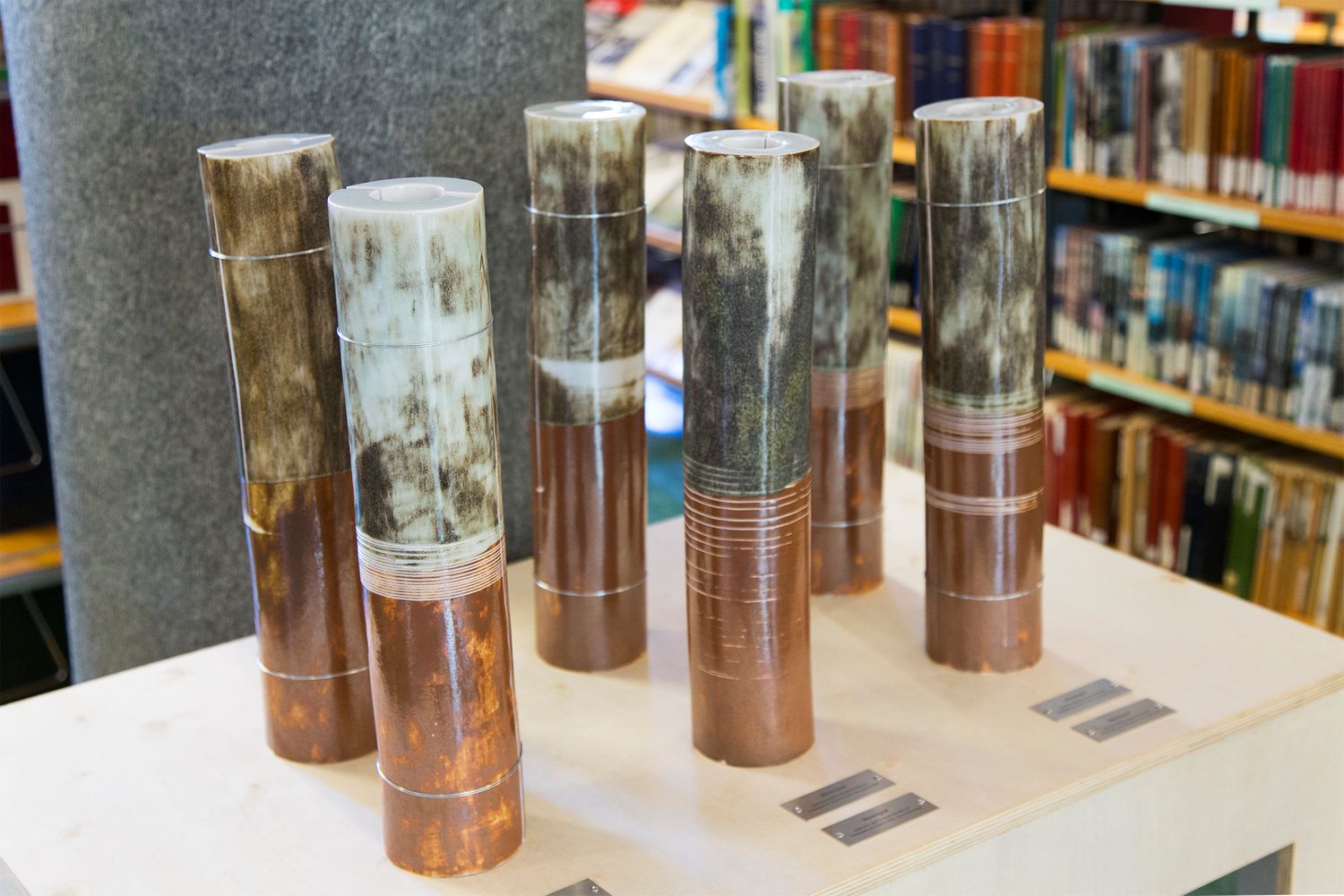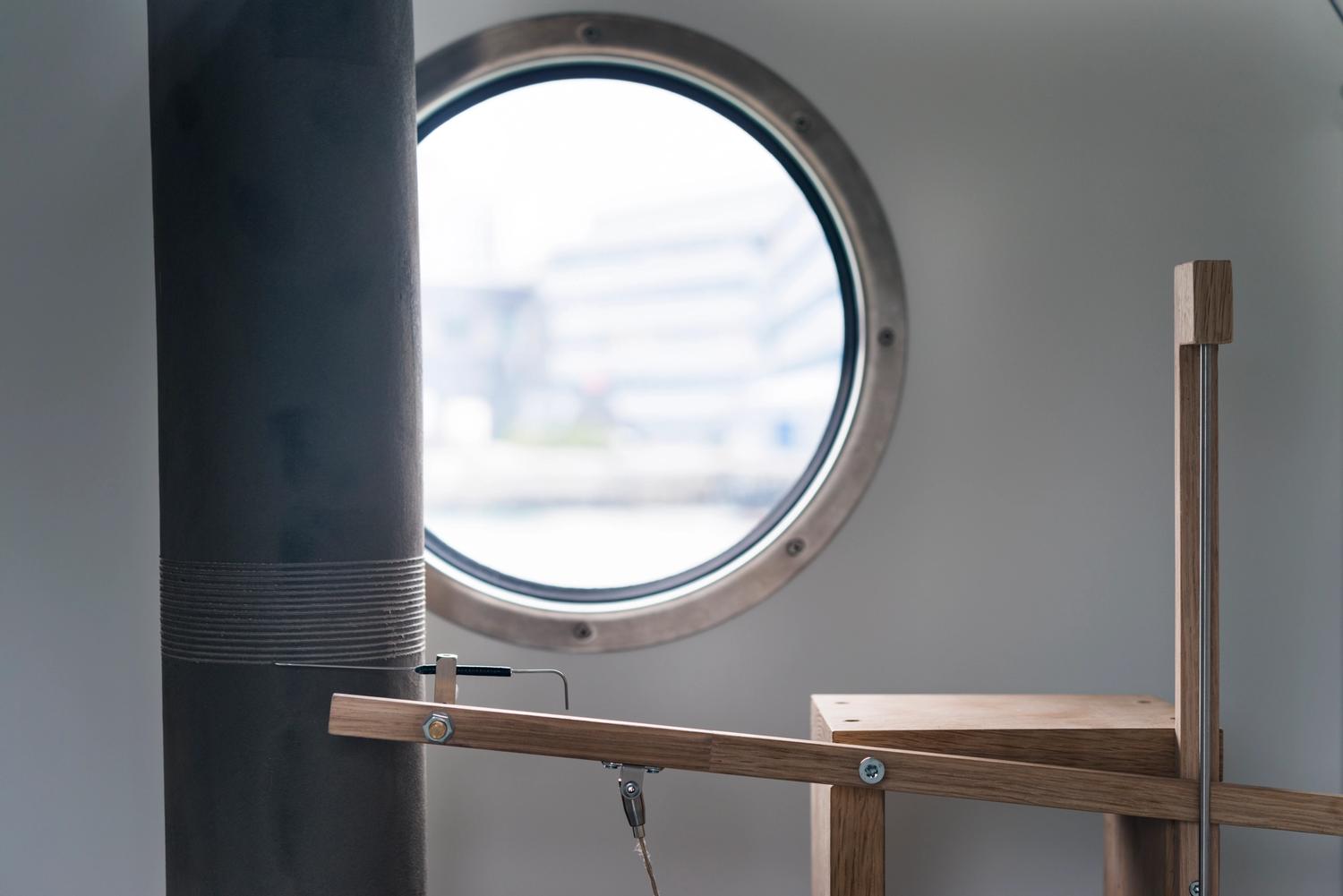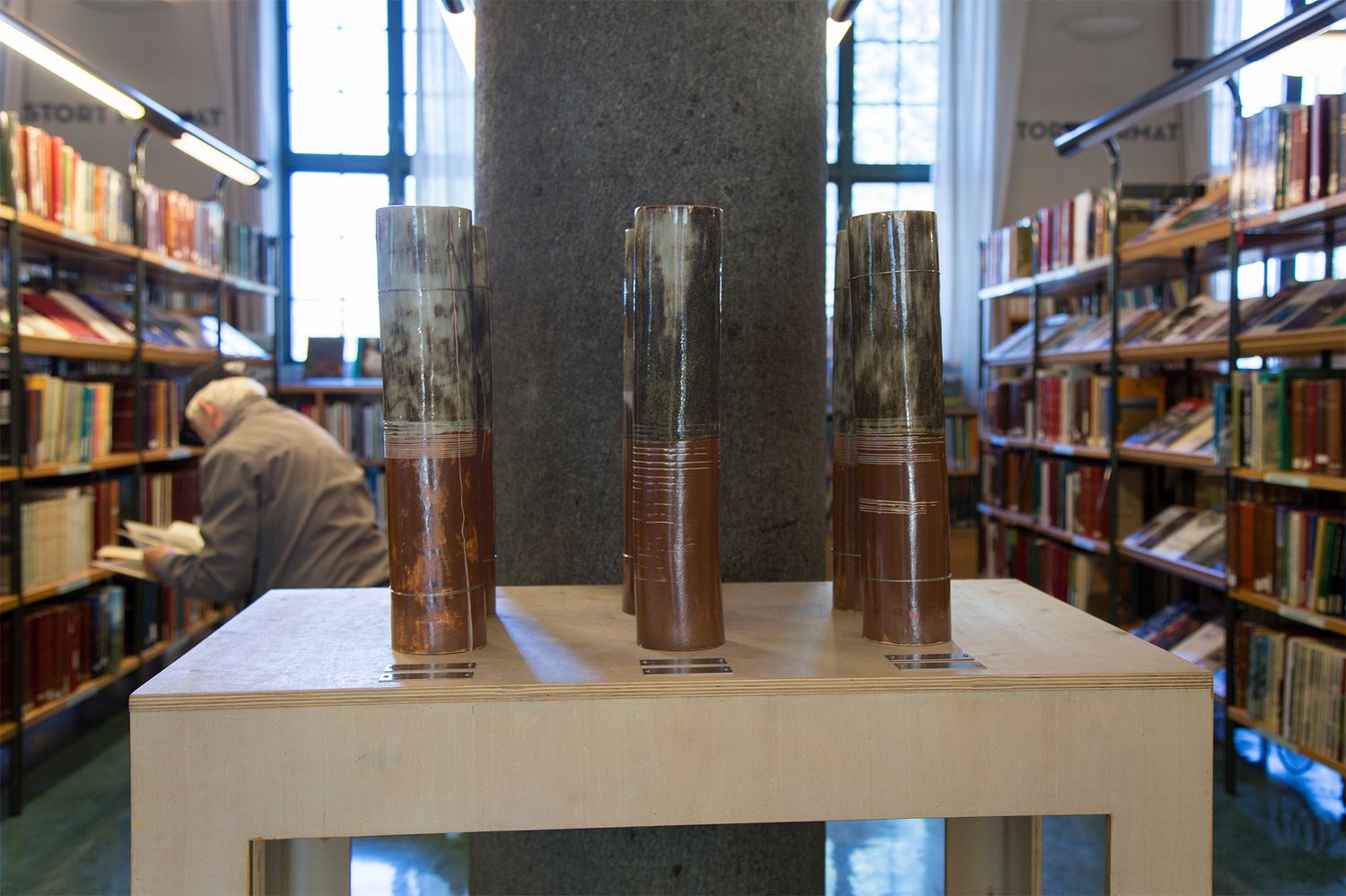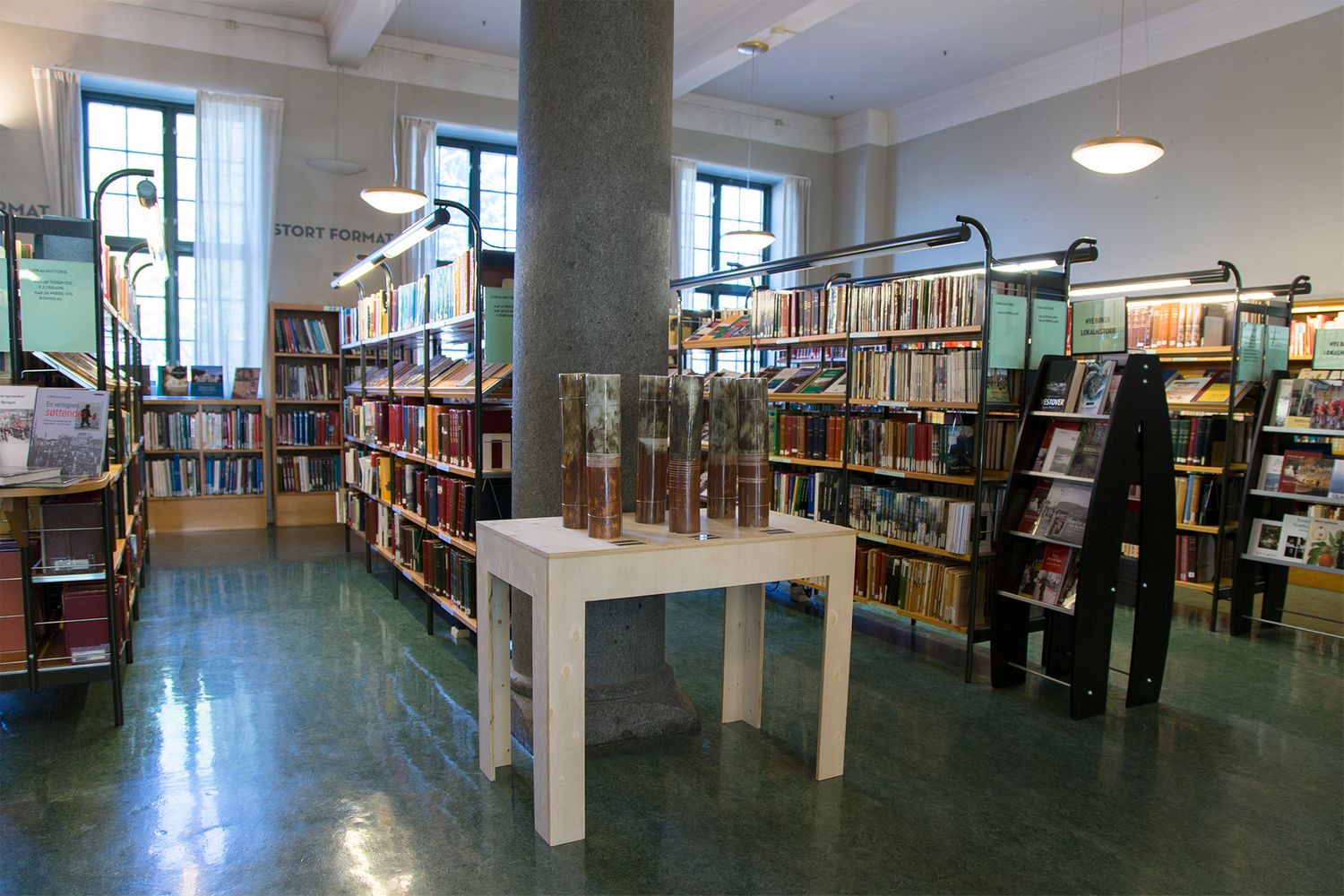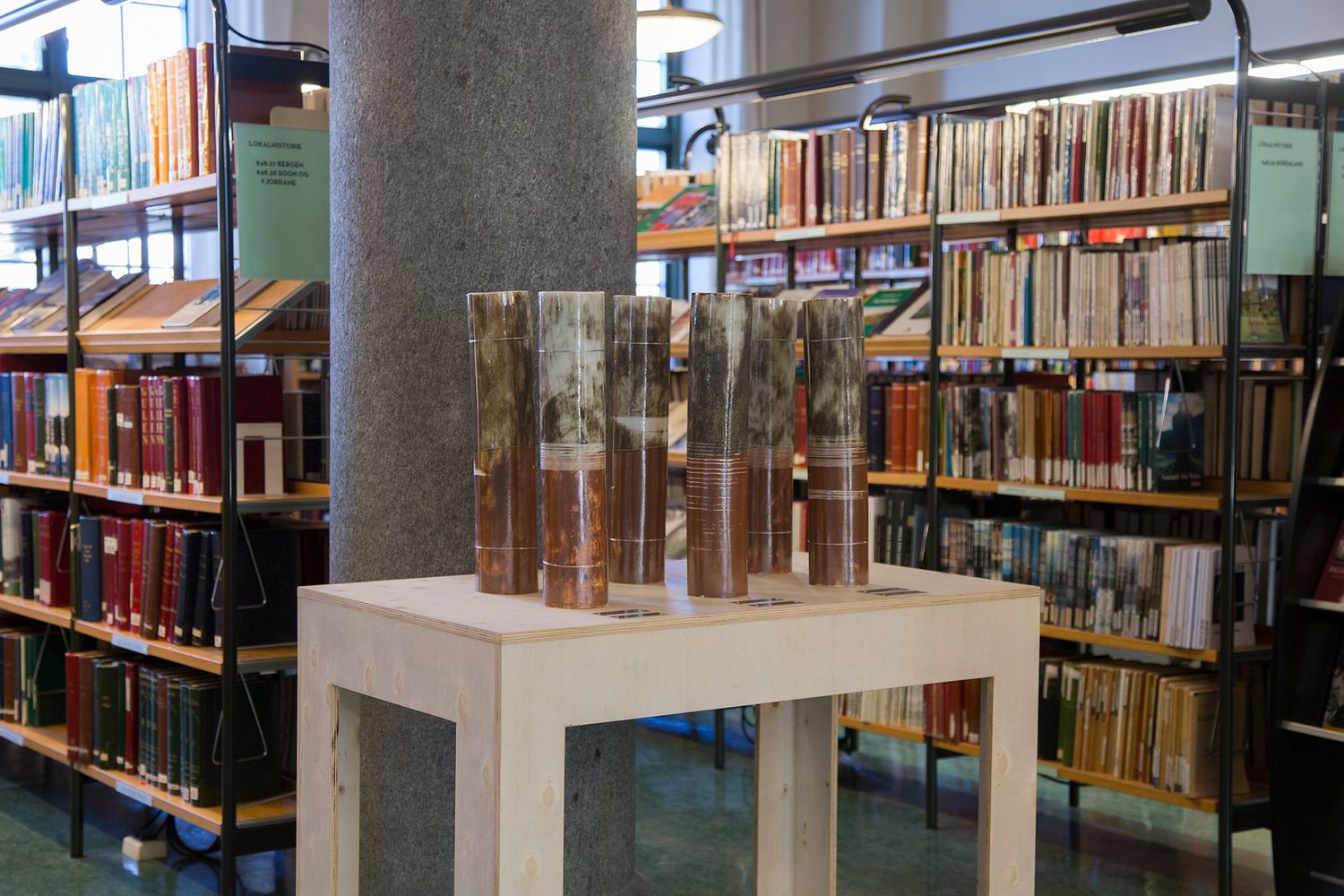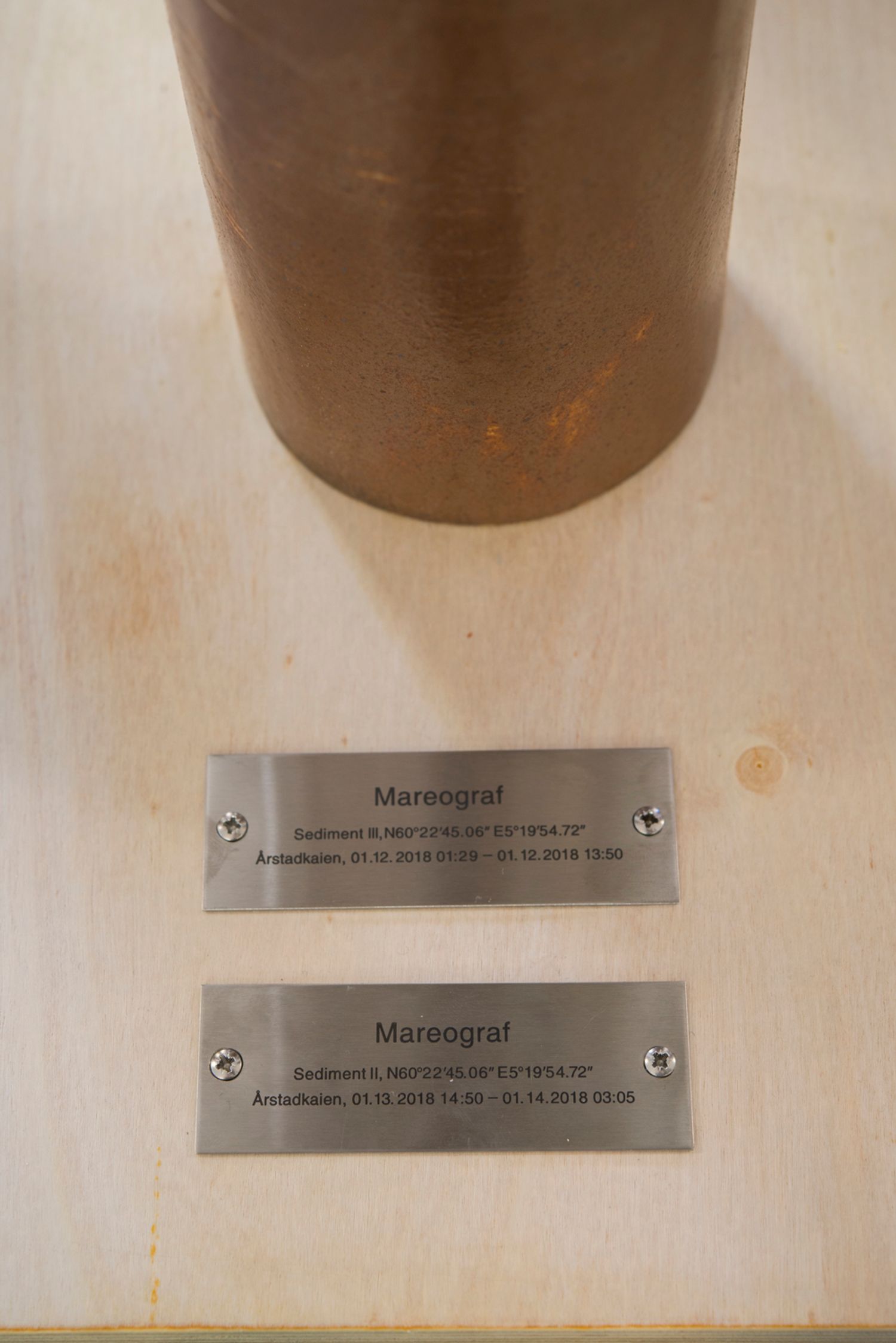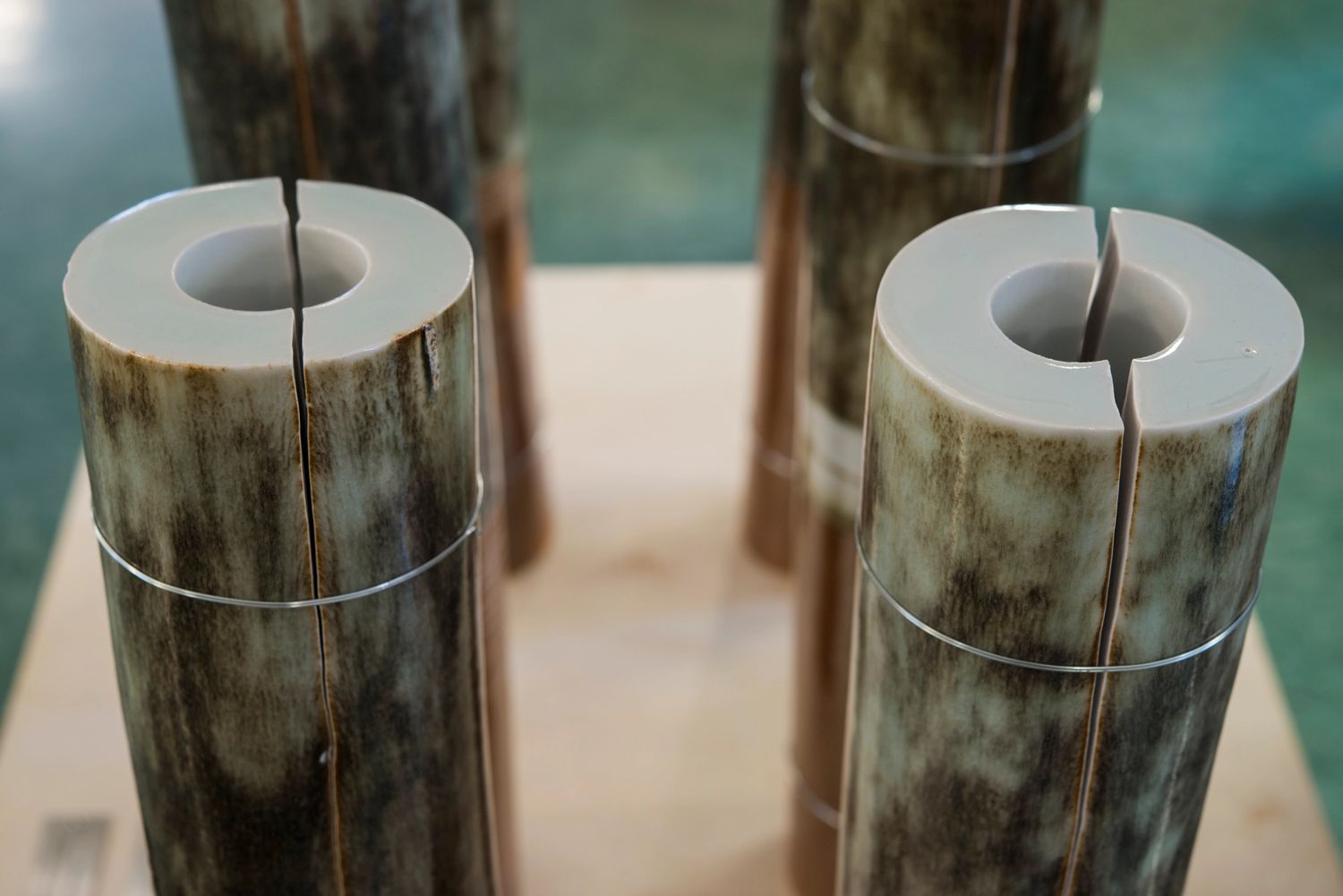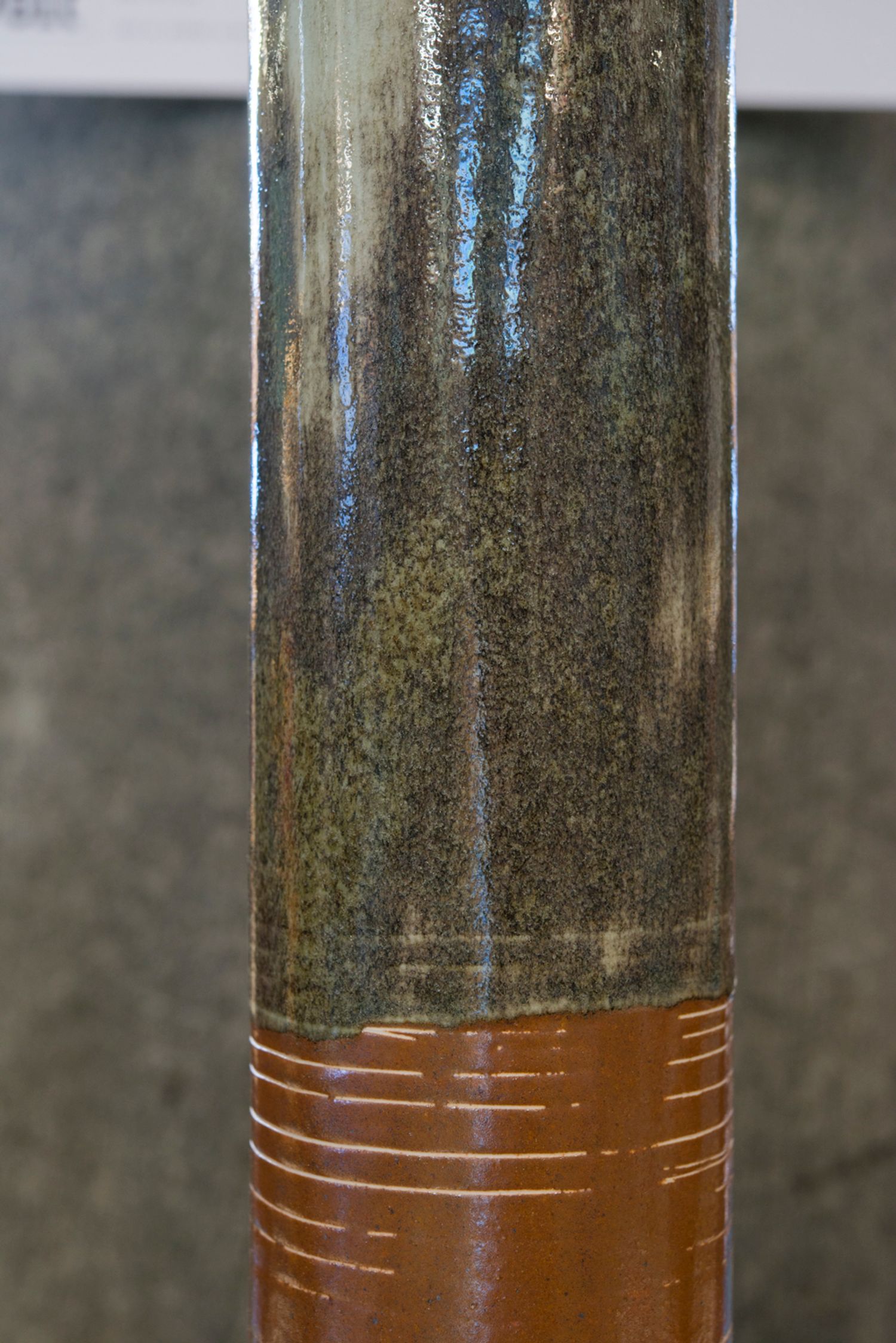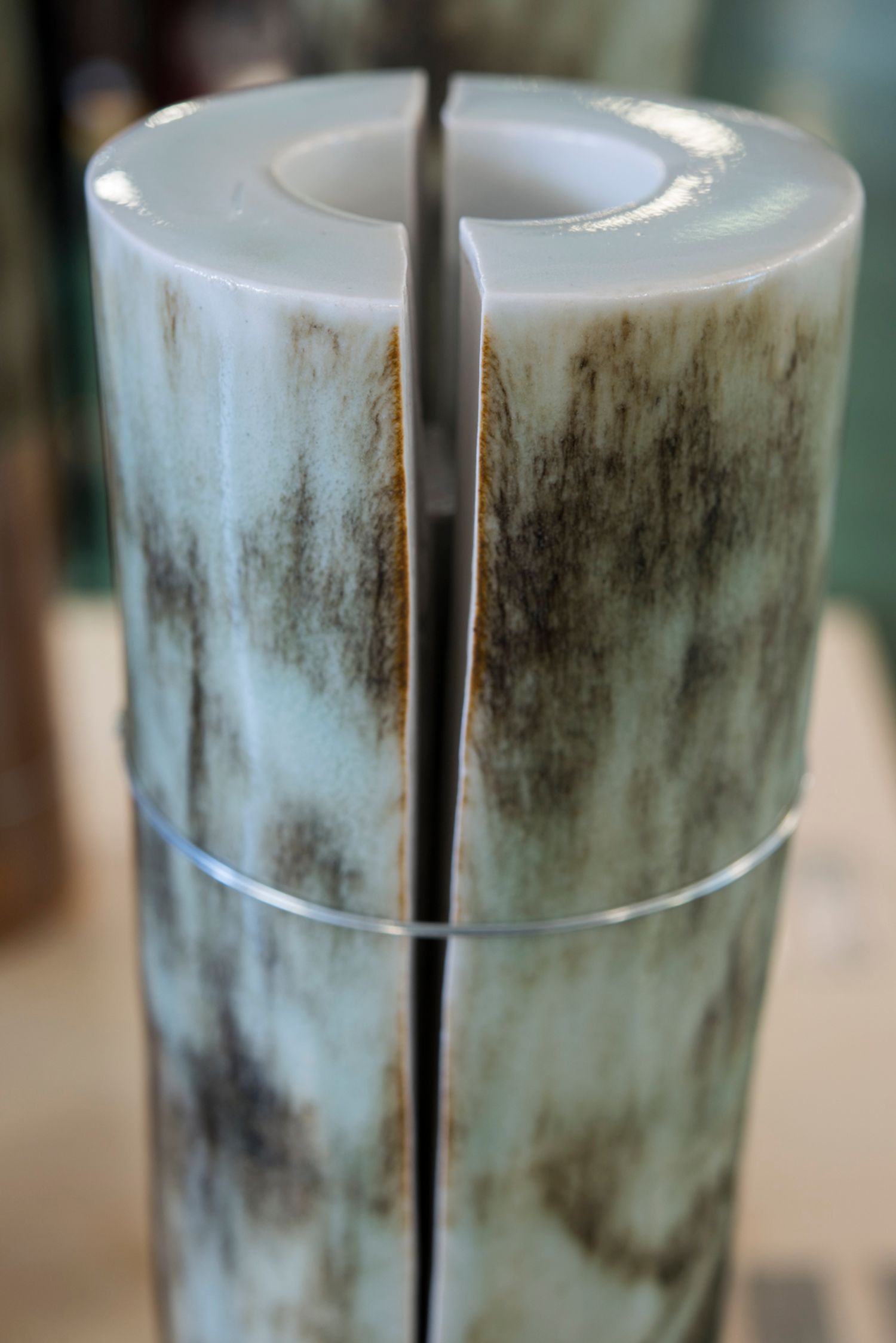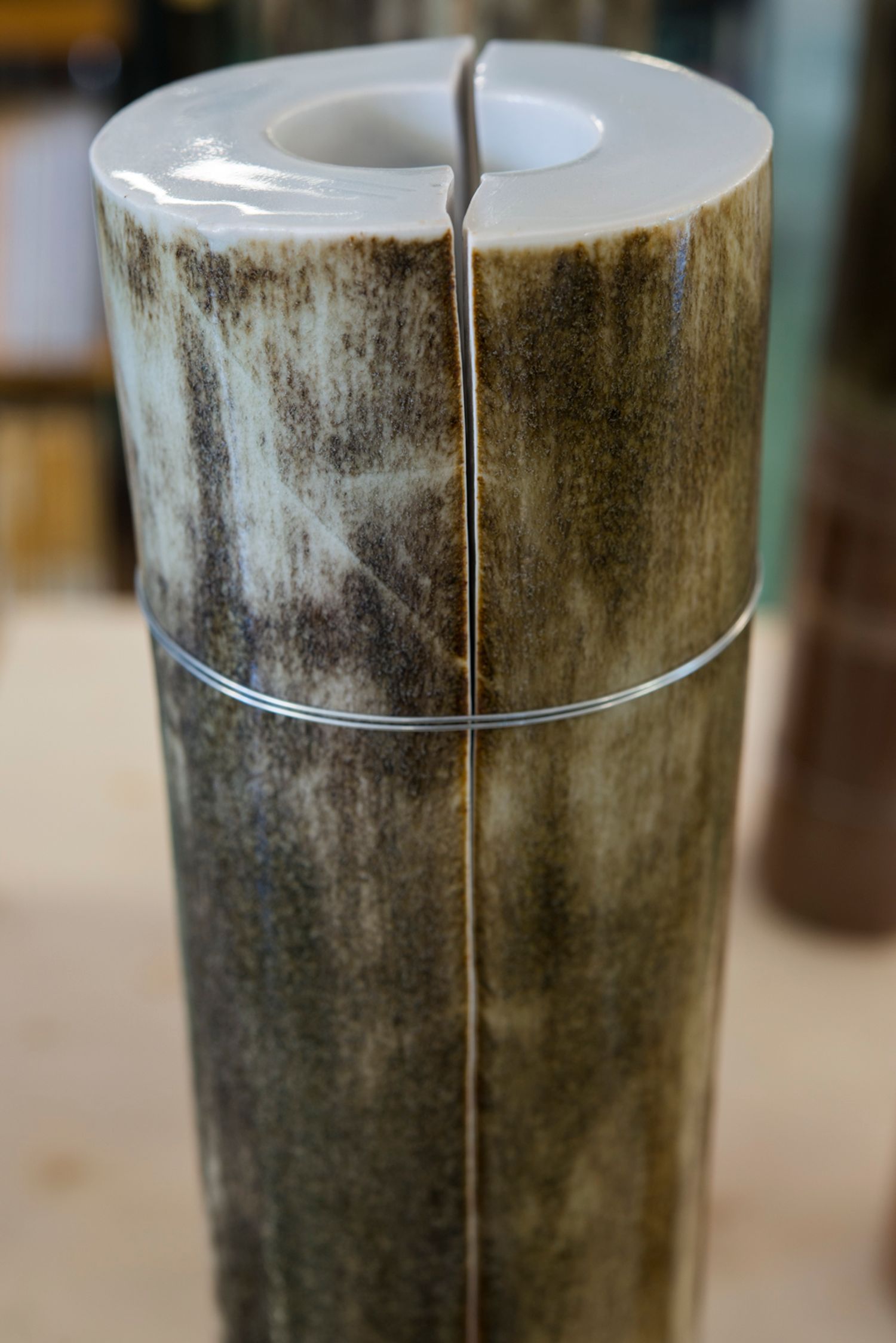Mareograph is a two-part project in Bergen which forms part of the artist Cecilia Jonsson’s exploration of marine environments and how the sea adapts to the various gravitational interactions of the earth, the moon and the sun.
The project is based on the Bergen City Council’s risk assessment of the seriously polluted marine environments in Puddefjorden and Store Lungegårdsvann in Bergen. This risk assessment has shown that the sea bed has a very high content of heavy metals and organic pollutants which now form the basis for the Council’s extensive clean-up work on the sea bed in the fjord.
In the project Mareograph Jonsson has used sediment samples from the sea bed in Puddefjorden and Store Lungegårdsvann, and applied it as a coating to clay formed into cylinders. These were placed one by one in her self-made analogue tidal gauge, which stood on the Årstad quay at the passage between Puddefjorden and Store Lungegårdsvann for a few days in January this year.
The tidal water was registered in the analogue gauge by the movements of a needle in the sediment cylinders, which were replaced when the water was at its lowest, once each night and once each afternoon. The six cylinders with sediments have subsequently been dried and ceramically fired in a reduction fire to 1300 degrees Celsius, and will be shown in a display case in the Local History section of the Bergen Public Library. The colour spectra in the incised cylinders come from various types of heavy metals, minerals and organic contaminants deposited in the sediments and the ways in which they have reacted to the high temperatures of the ceramic firing.
